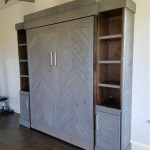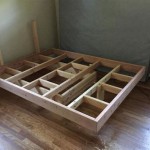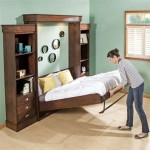How Tall Is A Standard Queen Size Bed
Understanding the essential aspects of a standard queen size bed's height is crucial for ensuring comfort, proper posture, and a restful night's sleep. Several factors, including the mattress thickness, box spring height, and bed frame design, contribute to the overall height of the bed. This article will delve into the key elements that determine the height of a standard queen size bed, providing insights into the average measurements and variations that may occur.
Mattress Thickness
The thickness of the mattress is a primary determinant of the bed's height. Standard queen size mattresses typically range in thickness from 10 to 14 inches, with plush or pillow-top models offering even greater thickness. The desired level of comfort and support should guide the choice of mattress thickness, as thicker mattresses generally provide more cushioning and pressure relief.
Box Spring Height
In traditional bed setups, a box spring is placed between the mattress and the bed frame. Box springs provide additional support and elevation, contributing to the overall height of the bed. Standard box springs measure approximately 8 to 9 inches in height, although low-profile models and adjustable bases can offer different heights.
Bed Frame Design
The design of the bed frame also influences the bed's height. Platform beds, which lack a box spring, typically sit lower to the ground, resulting in a lower overall height. Headboards and footboards, if present, can add additional height to the bed frame and contribute to its overall elevation.
Industry Standards
The International Sleep Products Association (ISPA) establishes industry standards for mattress and bed sizes, including queen size beds. According to ISPA, the standard height of a queen size bed, including the mattress, box spring, and bed frame, ranges from approximately 22 to 26 inches from the floor to the top of the mattress.
Variations and Considerations
It is important to note that variations in measurements may occur depending on the specific mattress, box spring, and bed frame chosen. Additionally, personal preferences and comfort levels can influence the desired height of the bed. Those with mobility issues or who prefer a lower bed may opt for a platform bed or a bed frame with a lower profile. Conversely, individuals seeking a higher sleeping position may prefer a mattress with greater thickness or a taller headboard.
Conclusion
Understanding the essential aspects that determine the height of a standard queen size bed is essential for creating a comfortable and supportive sleep environment. By considering the mattress thickness, box spring height, bed frame design, industry standards, and individual preferences, individuals can make informed decisions to select the perfect bed height for their needs. Whether seeking a lower bed for ease of access or a higher bed for a more elevated sleeping position, attention to these factors will ensure a restful and rejuvenating sleep experience.

Queen Size Bed Dimensions Compared To Other Sizes Eachnight

Queen Bed Dimensions A Guide Nectar Sleep

Image Result For Size Bed Dimensions Metric Queen Frame Sizes

Mattress Sizes Chart And Bed Dimensions Guide Amerisleep
What Is The Width Of A Queen Size Bed Frame Quora

Hand Carved Solid Wood Queen King Bed Headboard Headboards Size Dimensions Frame Measurements

Queen Size Mattress Dimensions How Big Is A Bed

Mattress Sizes And Dimensions Guide

Full Vs Queen Size Bed 2024 Mattress Nerd

Queen Size Bed Dimensions Guide Dreamcloud







